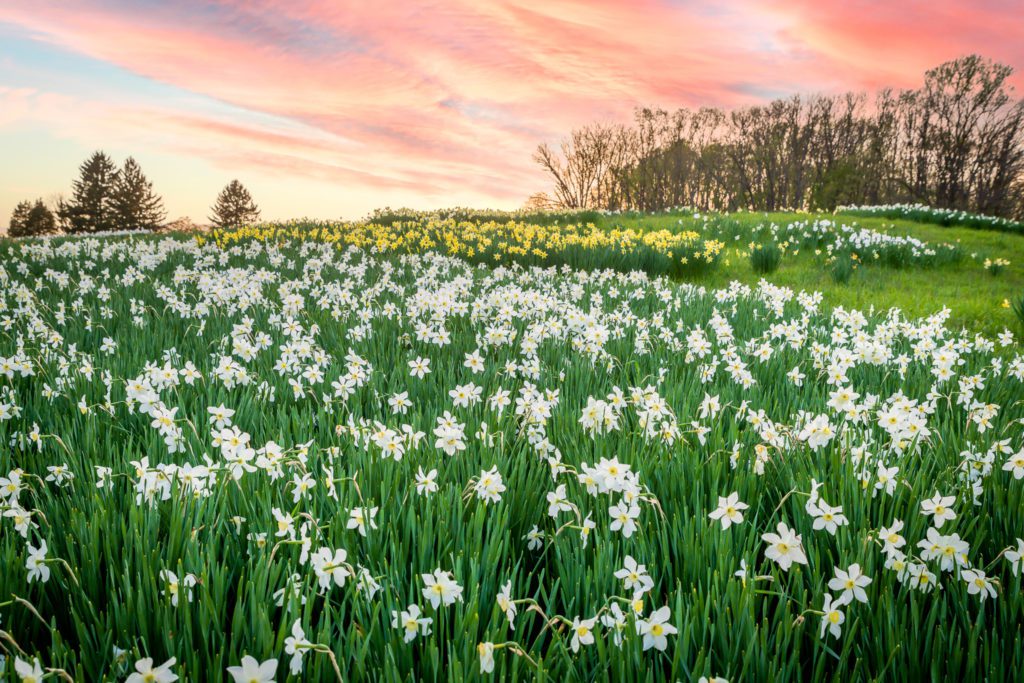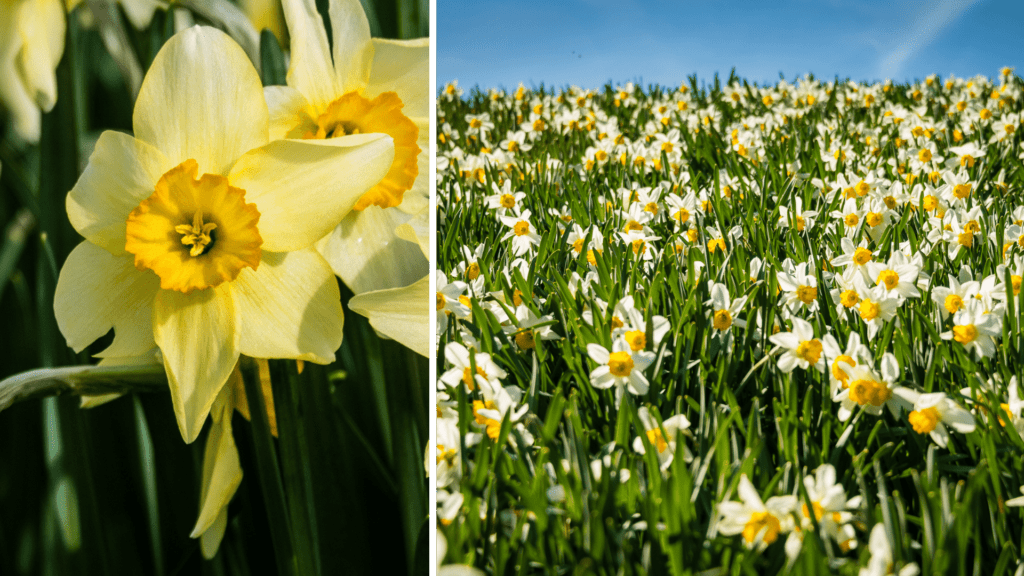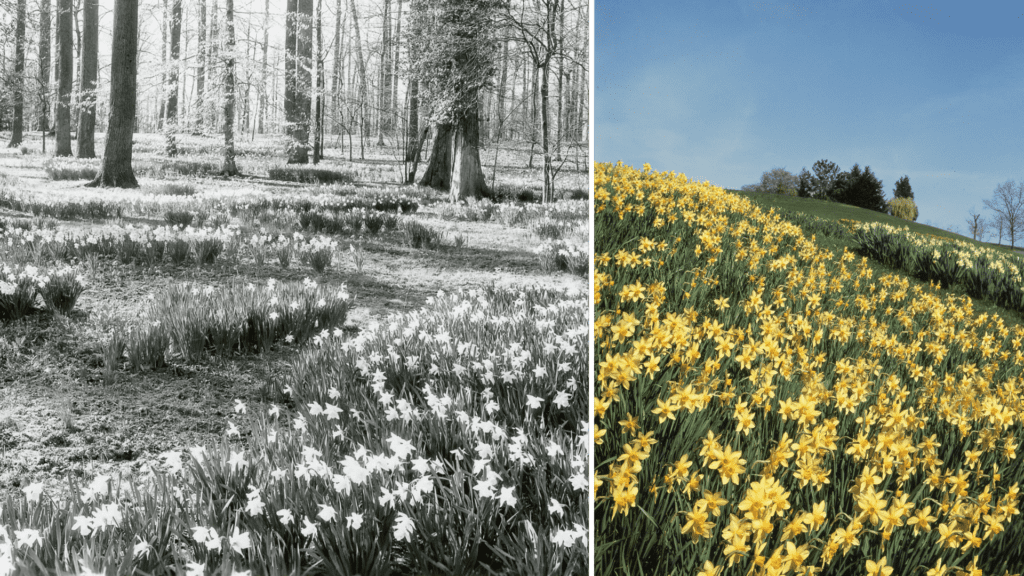
Since 1902, Narcissus have helped define the Winterthur Garden. Since March, they’ve been popping up like crazy.
Behold the daffodil.
They appear so commonly in gardens that we almost take them for granted; yet, there are 13 divisions, from large cup, small cup, and split cup to Triandrus, Cyclamineus, and Poeticus, to other species, wild variants, and wild hybrids, each with its unique and sometimes maddeningly subtle variations. They fascinated Winterthur founder Henry Francis du Pont throughout his long life, and for good reason.
“This one has a yellow cup with separate white petals making a very star-shaped appearance. There are some where the petals are a little bit wider but they’re still separate. There are still others where the petals overlap. And several cultivars subtly change color when in flower, so you have to watch them over time,” says Director of Horticulture Linda Eirhart. “I could see where that attention to detail, looking at that and enjoying seeing the differences, might have fascinated him because it really is fun to look at these and try to figure out, are they the same? Are they different?”
Daffodils so enthralled du Pont that he planted them in large drifts across his estate. Those big drifts still thrive in Browns Wood Meadow along what had been his golf course, at the edge of Azalea Woods, above the Quarry Garden, and on the March Bank, Sycamore Hill, Oak Hill, and along the entrance drive to the Visitor Center. In all, more than 500,000 bulbs blossom across Winterthur from late winter through April.

“The great pleasure in a bulb garden is in its permanency,” du Pont wrote in an article from 1915 about naturalizing Narcissi. In the article he notes that he laid out his first daffodil garden in 1902 on the lawn above what is now the museum. “Of the many gardens one can have, there is none which, once planned and planted, gives more satisfactory results with as little upkeep as that in which narcissi predominate,” he said. He so loved his daffodils that he revised the article in 1937 for The American Daffodil Year Book and again in 1961, when it appeared in the The Daffodil and Tulip Year Book 1961.
Many of the daffodils that blossom at Winterthur are historic cultivars from the late 1800s and early 1900s. For the past few years, Eirhart has been working to identify and document them, examining the petals, shapes, sizes, color, and even that subtle color change over the life of the blossom.
The distinctions can be so minute, du Pont did not mention certain cultivars in his articles because identifying them was so difficult. “Everybody has different likes in their flowers,” Eirhart says. “I’ve grown to love these older historic cultivars and the subtle differences between them.” Eirhart notes that they’ve become one of her favorite flowers and they herald a special time of year in the garden.

“When the daffodils are in flower, the cherries, the early azaleas, the magnolias, and the quince will also all be in bloom, so I automatically associate daffodils with all the wonderful trees and shrubs that are in flower too. It’s a beautiful time at Winterthur.”
Winterthur is one of the few places in the country where you can see so many daffodils. Find out for yourself while the daffodils are in bloom through April or enjoy daffodil-related events!